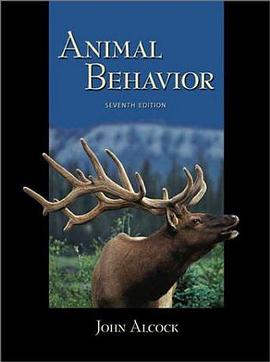

具体描述
This new edition of Animal Behavior has been completely rewritten, resulting in a more compact yet thoroughly up-to-date text. Notable is the inclusion, for the first time, of four-color photographs and illustrations throughout. Like previous editions, the book shows how evolutionary biologists analyze all aspects of behavior. It is distinguished by its balanced treatment of both the underlying mechanisms and evolutionary causes of behavior, and stresses the utility of evolutionary theory in unifying the different behavioral disciplines. Important concepts are explained by reference to key illustrative studies, which are described in sufficient detail to help students appreciate the role of the scientific process in producing research discoveries. Examples are drawn evenly from studies of invertebrates and vertebrates, and are supported by nearly 1,300 reference citations. The writing style is clear and engaging: beginning students have no difficulty following the material, despite the strong conceptual orientation of the text. Indeed, instructors consistently report a high level of enthusiasm for the book on the part of their students.
The book is organized into two major sections, one dealing with the proximate mechanisms of behavior and the other with the ultimate or evolutionary causes of behavior. The first two chapters introduce the distinction between proximate and ultimate causes in biology that is the foundation for the remaining chapters. Four subsequent chapters then take a more detailed look at different aspects of proximate bases of behavior.
The text then shifts to the other major section that covers the evolution of behavior. Making the point that each behavioral trait has an evolutionary history as well as potential current adaptive significance, the author examines the history and adaptive value of various categories of behavior, including evasion of predators, reproductive tactics and social behavior. A final chapter presents an evolutionary view of human behavior.
作者简介
Dr. Alcock's research deals with the evolution of diversity in insect mating systems. He studies selected species of desert insects in Arizona and Western Australia, in an attempt to document the variety of male mate-locating techniques in various bees, wasps, butterflies, dragonflies, and other
insects. The goal of his research is to test hypotheses on the adaptive value of the different ways in which males find mating partners.
目录信息
读后感
评分
评分
评分
评分
用户评价
相关图书
本站所有内容均为互联网搜索引擎提供的公开搜索信息,本站不存储任何数据与内容,任何内容与数据均与本站无关,如有需要请联系相关搜索引擎包括但不限于百度,google,bing,sogou 等
© 2025 book.wenda123.org All Rights Reserved. 图书目录大全 版权所有




















